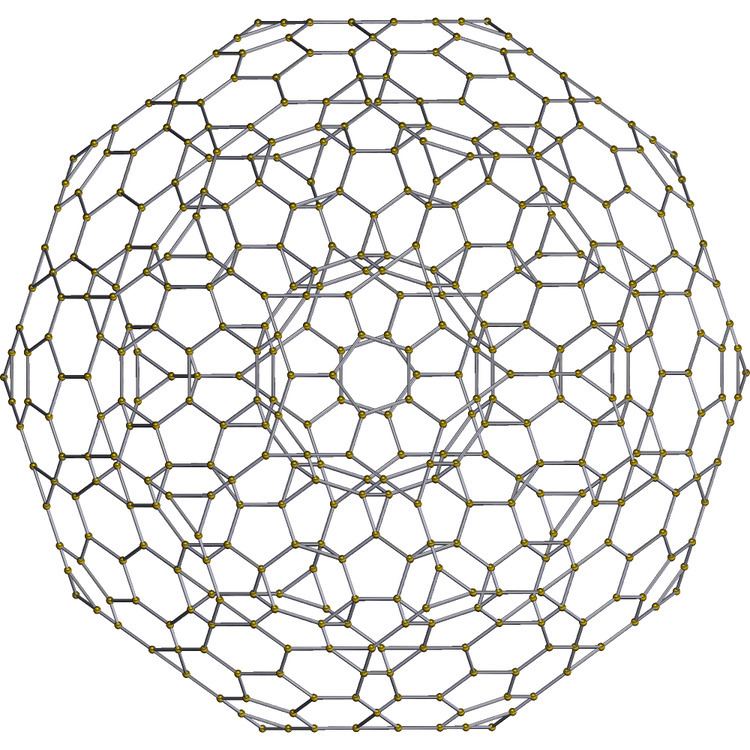 | ||
In geometry, a truncated 120-cell is a uniform 4-polytope formed as the truncation of the regular 120-cell.
Contents
There are three trunctions, including a bitruncation, and a tritruncation, which creates the truncated 600-cell.
Truncated 120-cell
The truncated 120-cell or truncated hecatonicosachoron is a uniform 4-polytope, constructed by a uniform truncation of the regular 120-cell 4-polytope.
It is made of 120 truncated dodecahedral and 600 tetrahedral cells. It has 3120 faces: 2400 being triangles and 720 being decagons. There are 4800 edges of two types: 3600 shared by three truncated dodecahedra and 1200 are shared by two truncated dodecahedra and one tetrahedron. Each vertex has 3 truncated dodecahedra and one tetrahedron around it. Its vertex figure is an equilateral triangular pyramid.
Alternate names
Bitruncated 120-cell
The bitruncated 120-cell or hexacosihecatonicosachoron is a uniform 4-polytope. It has 720 cells: 120 truncated icosahedra, and 600 truncated tetrahedra. Its vertex figure is a digonal disphenoid, with two truncated icosahedra and two truncated tetrahedra around it.
Alternate names
Truncated 600-cell
The truncated 600-cell or truncated hexacosichoron is a uniform 4-polytope. It is derived from the 600-cell by truncation. It has 720 cells: 120 icosahedra and 600 truncated tetrahedra. Its vertex figure is a pentagonal pyramid, with one icosahedron on the base, and 5 truncated tetrahedra around the sides.
Alternate names
Structure
The truncated 600-cell consists of 600 truncated tetrahedra and 120 icosahedra. The truncated tetrahedral cells are joined to each other via their hexagonal faces, and to the icosahedral cells via their triangular faces. Each icosahedron is surrounded by 20 truncated tetrahedra.
